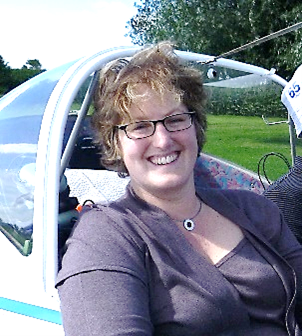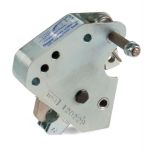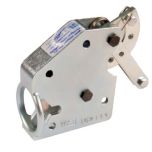Tost Tow Release Overhaul

In wintertime, we receive many customer releases from all over the world every day for overhaul. So, what does it take to overhaul a tow release?
Register the Release
The first step is to register them by release type, serial number, special features like release lever type, special external levers or brackets, mounting bolts, the position of the lever on the semi-circular (we call it segment), and the customer name. We want to make sure that each single tow release we receive will go back to its owner afterward with the same installation features as on arrival. Kindly always indicate the type of glider in which the release is installed. Sometimes, special adjustments are necessary, e.g., for vintage gliders. In North America forward release for an overhaul to Wings & Wheels.
Release Disassembly
The second step is to separate the inner parts from the release body and clean in a washing machine to remove dirt, soil, and oil. All parts are dismounted (bolts, washers), the spring is taken out and thrown away – being the life-limiting element in a tow release, the spring has to be renewed after the TBO has been reached.
Now parts can be inspected and a decision is taken which main components need to be replaced, e.g., totally rusted or worn-out hooks.
Release Reassembly
Now the reassembling can start: inserting the spring, reassembling the inner life, greasing it. Mounting it all into the release body. As surface protection, the parts are painted.
The most important part of the overhaul is the testing of the tow releases in special test rigs in our test lab. In the test rig, the release is set under load to simulate the functioning under load. The release actuating force is tested for both types, the nose releases (E-type releases) and center-of-gravity releases (G-type releases).
The test result of each release is written down in the test report. If the result is not within the acceptable range, the inner mechanics can be adjusted.
With another test rig, each G-type release is tested and the releasing angle is registered. For the center of gravity releases, we need to find out the automatic releasing angle. It must be at about 83° which is defined in the type certification of the release. When you think about your experiences in winch launching, the position of the glider/the winch cable is at a nearly 90° cable angle to the ground when you are set free of the cable. If the angle of 83° cannot be reached, the hook is abused and has to be replaced by a new one.
Final Inspection
The final step of the inspection is the examination of the overhauled release by our Certifying Staff. When the release has passed the inspection, it is sealed. The release body is sealed with a special sticker containing the TOST logo, indicating the year of its overhaul.
As we all know, documents are very important! The EASA FORM is printed for each release after the completed overhaul, showing the serial number of the release, the type of release, the inspection date, and the signature of the Certifying Staff. You receive with the EASA FORM One the Operational Manual of the release with important information for a safe operation and advice for regular checks and maintenance.
As documentation of the release overhaul, we keep the Test report which is also signed by the Certifying Staff. This document includes all test results.
The last step is to inform our customers that the overhaul is finished and the releases are ready to be shipped back. The overhaul process takes around 1-2 weeks in our works. In case you need an overhauled release very urgently, e.g., in the middle of the gliding season, “Exchange Releases” can be supplied from our stock or Wings & Wheels.
Banner Photo Taken by Schäferle

Founded in 1945, Tost holds an LBA approval as Design and Production Organisation (LBA= German Aviation Authorities) since 1969. They produce safety equipment, landing wheels, tow releases, tires, tubes, and disk brakes for gliders.











